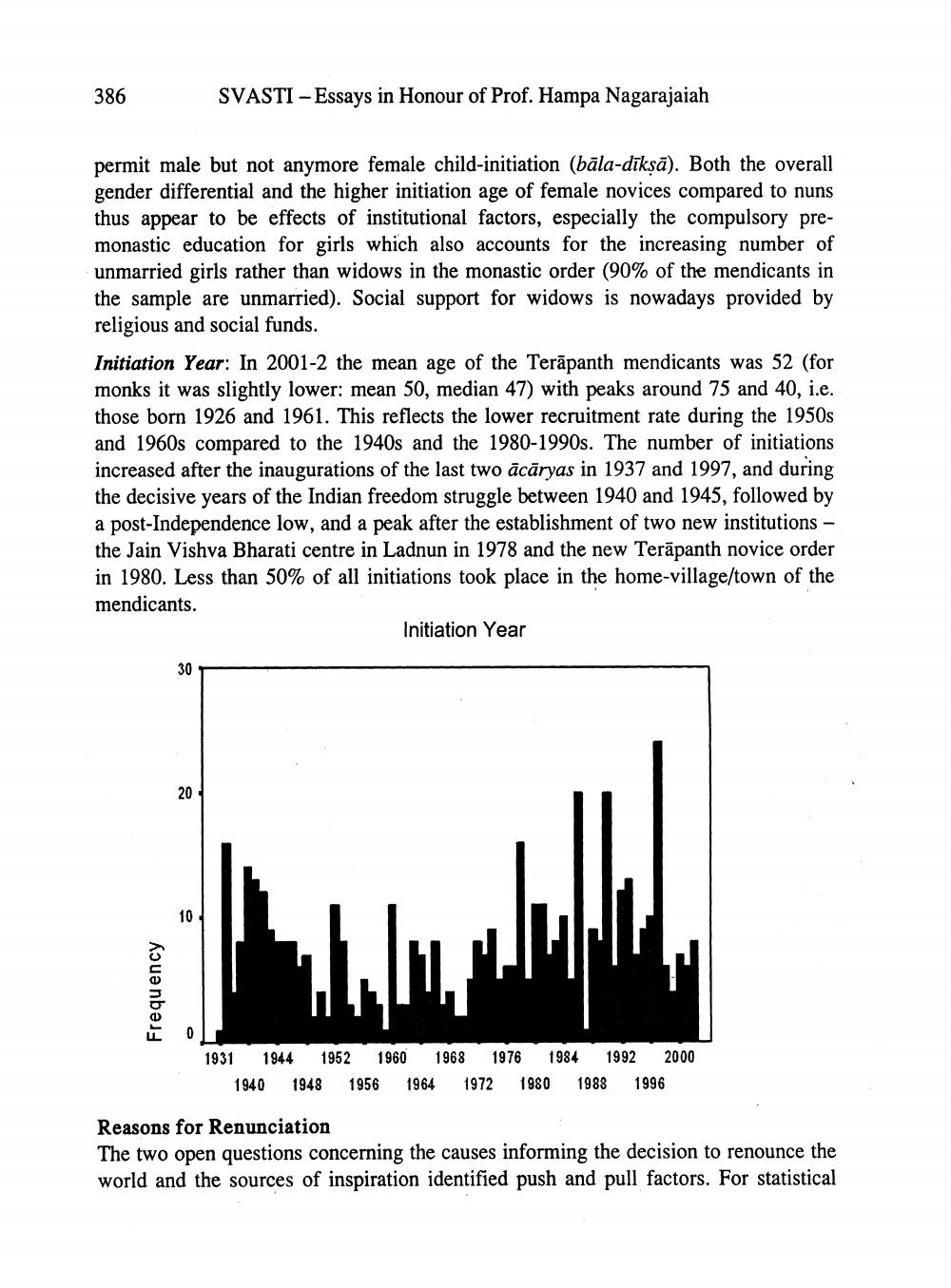________________
386
SVASTI - Essays in Honour of Prof. Hampa Nagarajaiah
permit male but not anymore female child-initiation (bāla-dīksā). Both the overall gender differential and the higher initiation age of female novices compared to nuns thus appear to be effects of institutional factors, especially the compulsory premonastic education for girls which also accounts for the increasing number of unmarried girls rather than widows in the monastic order (90% of the mendicants in the sample are unmarried). Social support for widows is nowadays provided by religious and social funds. Initiation Year: In 2001-2 the mean age of the Terāpanth mendicants was 52 (for monks it was slightly lower: mean 50, median 47) with peaks around 75 and 40, i.e. those born 1926 and 1961. This reflects the lower recruitment rate during the 1950s and 1960s compared to the 1940s and the 1980-1990s. The number of initiations increased after the inaugurations of the last two ācāryas in 1937 and 1997, and during the decisive years of the Indian freedom struggle between 1940 and 1945, followed by a post-Independence low, and a peak after the establishment of two new institutions - the Jain Vishva Bharati centre in Ladnun in 1978 and the new Terāpanth novice order in 1980. Less than 50% of all initiations took place in the home-village/town of the mendicants.
Initiation Year
Frequency
1931 1944 1952 1960 1968 1976 1984 1992 2000
1940 1948 1956 1964 1972 1980 1988 1996
Reasons for Renunciation The two open questions concerning the causes informing the decision to renounce the world and the sources of inspiration identified push and pull factors. For statistical




